What are the typical early symptoms of a heart attack?
There is a saying in the medical community that every angina is an aborted heart attack, meaning that the patient's front foot has already stepped into the door of a myocardial infarction, and it's up to the other foot to step back (angina is relieved) or forward (an infarction occurs). Heart attacks often come on so strong that many patients don't even have a chance to get into the hospital, so it's important to recognize high-risk symptoms. Chest pain is an important manifestation of a heart attack, and the following must be watched for.
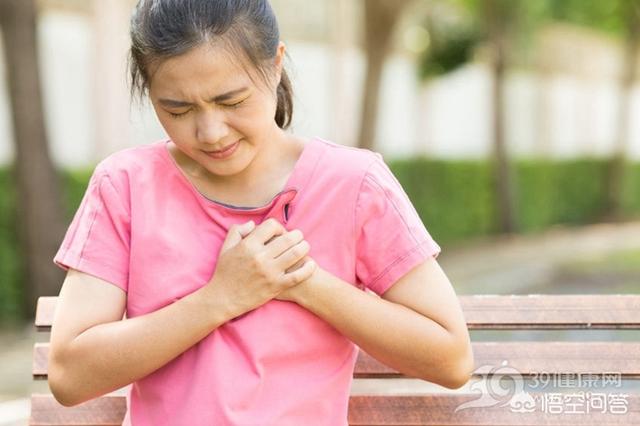
Mentoring specialists:
Dr. Zhang Haicheng, Chief Physician, Department of Cardiology
Director of Cardiovascular Department Li Rong
1. Chest pain at night
When precordial pain occurs during sleep, dispose of it immediately with sublingual nitroglycerin.
Because people are at rest or at night, unlike the need to increase blood supply during activity, chest pain at this time often indicates that there may be vasospasm on the basis of coronary stenosis, new-onset angina pectoris, which may induce infarction if not handled in a timely manner.
2. Worsening of chest pain symptoms
People who have had angina before should also be on high alert for a heart attack if their chest pain symptoms have slowly worsened, or increased in frequency, duration, or scope in the last month.
In addition, if chest pain is not relieved within 20 minutes after taking nitroglycerin under the tongue, you should also be alert for heart attack.
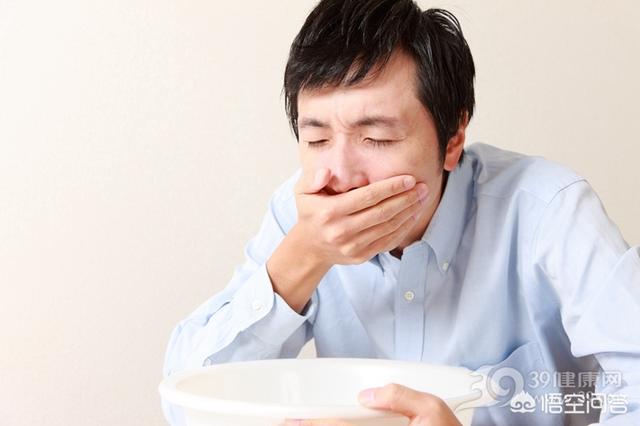
3. Chest pain with no obvious cause
If you have had angina attacks in the past, and there are triggers to look for, such as agitation, exertion, etc., but have recently experienced chest pain without any obvious triggers, accompanied by nausea, vomiting, and profuse sweating, you need to consult a doctor immediately.
4. Sudden panic and suffocation
It is also a good idea to seek medical attention right away if you experience symptoms of weakness, panic, chest tightness that you have never experienced before, or if you experience panic and shortness of breath when you are active.
In addition, if toothache, epigastric pain, or left shoulder pain occurs after exertion, it should not be taken lightly.
Here's what you should do when chest pains strike
If there is a past history of coronary artery disease or risk factors such as smoking, diabetes, hypertension, hyperlipidemia, etc., the patient may be asked toprocumbentorSit in a chair with a backrestand stop all activities and emotional stimulation.Call 120 as soon as possible.。
You can if you can.blood pressureIf the blood pressure exceeds 90/60 mmHg and is accompanied by crushing chest pain, or with insidious symptoms such as neck pain, toothache, or epigastric pain, sublingualTake a nitroglycerin tablet.If it doesn't work, take another tablet. There's no nitroglycerin available.quick-acting rescue pillSubstitute.
Three wrong moves not to make with chest pain

Myth 1: Slapping the chest and back hard
Some people say that when you have chest pain, you should slap your chest and back vigorously, so that you can accelerate blood circulation and relieve the pain. In fact, this will only accelerate the delivery of life.
In case of acute chest pain, the first step should be to remain calm, any movement and emotional stimulation can aggravate the condition and even induce sudden death.
Myth 2: Chewing aspirin immediately
Chewing aspirin is effective for acute heart attacks, however, if the patient is not having a heart attack, but an aortic coarctation, chewing 300mg of aspirin may be fatal.
Myth 3: Violent Coughing
In the case of certain heart problems, the patient's circulation can suddenly stop.
Violent coughing one can activate the sympathetic nerves, so that the heart muscle to increase the demand for blood supply; two may elevate blood pressure, heart attack, pulmonary embolism and other conditions are not favorable.
Pre-onset triggers. Some patients with heart attack have obvious triggers, and Tofler et al. in foreign countries found that 48% of patients with heart attack had heart attack triggers, in order of medium/high-intensity physical activity, emotional stress, lack of sleep, and excessive satiety. Domestic Xie Rongdi et al. analyzed more than nine thousand cases of acute heart attack patients in Shenzhen, and found that overexertion was the most common. One study found that physical stress was the most common trigger for all patients. And gender analysis showed that female patients were more sensitive to mental stress and sudden changes in environment and weather; excessive poor lifestyle was the second most common trigger after physical stress in male patients [1].
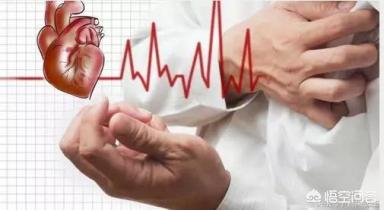
Symptoms. The foreign NRMI study suggested that 64.6% of patients with acute myocardial infarction had chest pain.The GRACE study of patients worldwide found that chest pain was the most common symptom. Subgroup analysis of the ACS registry study in the United States found that 89% of patients had chest pain, while 38% of patients combined with profuse sweating. Our study found that the proportion of Chinese patients with chest pain was consistent with the data of most foreign studies, but significantly lower than the GRACE study, while more than 60% of patients combined with profuse sweating, which was a common clinical symptom after chest pain, significantly higher than the data of foreign studies [1].
Our study found that typical symptoms such as chest pain and sweating were less common in female myocardial infarction patients than in males, while atypical symptoms such as nausea/vomiting, shortness of breath, malaise, radiating pain, back pain, epigastric pain, and fecal/urinary incontinence were more common, which is basically in line with the data from foreign studies. Women, as a special group of acute myocardial infarction, have been found in most studies to have less chest pain than men, while atypical symptoms such as nausea, vomiting, and jaw pain are more common in female patients [1].
[Reference]
[1] FU Rui,YANG Yuejin et al. Analysis of differences in clinical symptoms and predisposing factors of acute myocardial infarction patients of different genders in China [J]. Chinese Journal of Circulation,2014,12(29):964-967.
By Wang Yu, Department of Pharmacy, No. 477 Hospital of the People's Liberation Army, and members of the Pharmacy Network
The authoritative interpretation of Pharmaceutical Affairs, unauthorized reproduction, plagiarism will be punished.
What are the typical early symptoms of a heart attack?
When it comes to the early symptoms of heart attack, it is important to differentiate between looking at the typical and atypical symptoms and look at them separately.
I. Typical symptoms
1. Dizziness
Dizziness is the first symptom of some patients with heart attack, especially in diabetic patients with severe lesions of the anterior descending branch of the heart, atypical chest pain, severe myocardial ischemia may lead to a decline in the blood supply function of the heart, resulting in a certain degree of decline in blood pressure, cerebral hypoxia, and then dizziness.
Although it is a typical symptom, colds can also make people dizzy and are not specific, so they make it difficult for patients to distinguish between them.
2. Chest tightness
Chest tightness is a typical symptom of myocardial ischemia and a precursor symptom to the onset of heart attack in some patients, so you should be vigilant. This symptom, or very important. Once the symptoms of chest tightness, we should go to the hospital in time to check and consult the doctor, so as to avoid the sudden occurrence of heart attack.
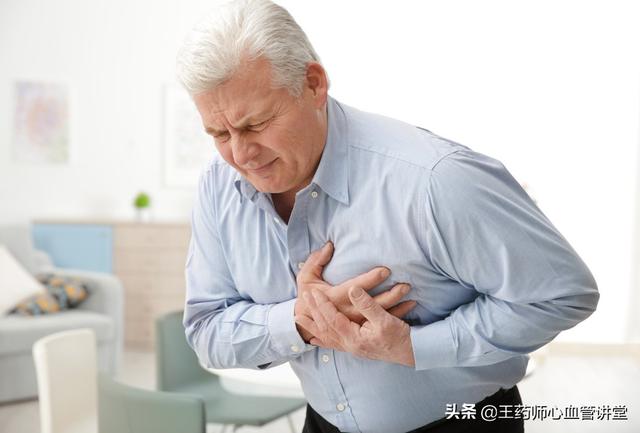
3. Difficulty in breathing
The presence of unexplained paroxysmal dyspnea, especially after activity, relieved by rest or aggravated by lying down and improved by sitting up, may be a myocardial infarction and requires special attention.
4 Headaches
Headache may be a manifestation of certain patients with heart attack, mostly as a concomitant symptom. In patients with heart attack, vasospasm occurs on the basis of cerebral atherosclerosis, which can cause headache symptoms.
5. Pain in the region of the shoulder blade
Pain in the scapular region is a manifestation of myocardial ischemia in some patients.
II. Atypical symptoms
About one-fourth of heart attacks occur when patients do not have typical symptoms such as chest pain. The gradual deterioration of bodily functions and increasing insensitivity to pain make it more likely to occur without obvious symptoms of chest pain, which makes it more difficult for patients to be detected.
Such as myocardial ischemia after the occurrence of ischemia, can be manifested as toothache, especially some patients with dental disease, the diagnosis is more difficult; there is also a sore throat, stomach pain; some patients manifested as abdominal pain, severe pain, intolerable, and persistent; there are also manifested as the lower limbs of the soreness and numbness of the swelling, and even the soles of the foot pain.
Therefore, from headache, toothache, sore throat, abdominal pain, pain in the soles of the lower limbs, may be atypical manifestations of myocardial ischemia and myocardial infarction. The possibility of coronary heart disease should also be considered if sudden shock or fainting occurs without cause.
To prevent acute heart attack, the first step is to prevent atherosclerosis. Regular medical checkups should be conducted to check electrocardiograms, blood pressure, blood lipids, etc., and targeted treatment should be provided; middle-aged and old-aged patients with hypertension combined with hyperlipidemia should undergo antihypertensive and lipid-lowering treatments to prevent the occurrence of blood clots.
I am Pharmacist Wang, insisting on spreading the knowledge of cardiovascular and cerebrovascular diseases with simple and easy-to-understand words, and dedicating my own small efforts for a healthy China. If you think my answer is helpful to you, please leave a like it! In addition, if you still have related questions, welcome to leave a message, we discuss together!
Myocardial infarction belongs to the serious cardiovascular disease, foreign literature reports that more than 60% of myocardial infarction occurs in the elderly over 65 years old, and the elderly aged 75 years and above accounted for about 60% of the patients who died of myocardial infarction, the reasons for this situation, and the elderly patients with atypical symptoms of myocardial infarction, the misdiagnosis of high rate, and the delay of the early treatment has an important relationship.
sweat
Patients with myocardial infarction almost always have symptoms of cold sweating. Normal sweating is front and back, forehead, neck, armpits, skin temperature is elevated, while myocardial infarction, blood pressure drops, vasoconstriction, the skin is wet and cold, neck forehead palms and feet covered with beads of sweat.
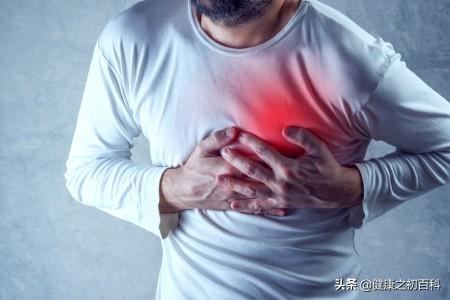
Severe and persistent pain in the retrosternal or precordial area
A typical symptom of acute myocardial infarction is severe and persistent pain in the retrosternal or precordial area.Of course, there are also some patients whose first symptoms are epigastric pain, toothache, shoulder pain, etc. These atypical symptoms also make early diagnosis of myocardial infarction difficult.
胸憋闷
Many patients in the month before the role of acute heart attack, there will be early morning bear suffocation symptoms, will be suffocated in the middle of sleep to wake up, about 5 to 10 minutes, and others feel suffocated when going uphill or riding a bicycle, these problems are usually induced by excessive tension, full meals, emotional excitement, sustained stressful work, and overexertion and other factors.
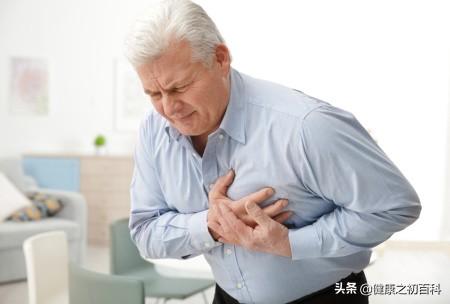
Angina attack not relieved by medication
In the past, angina attacks, sublingual nitroglycerin will soon be relieved, while myocardial infarction appears, containing the same dose of nitroglycerin can not be relieved, the need to increase the dose or several times containing may be relieved.
Acute myocardial infarction can develop in young, middle-aged and elderly people suffering from coronary angina, and is often delayed diagnosis due to atypical symptoms that are overlooked, because it is important not to ignore the frequent abnormalities in the body.
Good life from the beginning of health, the beginning of health, health science professional media!
Myocardial infarction is a special type of coronary heart disease that occurs when the coronary arteries supplying myocardial cells with blood become occluded due to various reasons, leading to ischemia, hypoxia and necrosis of myocardial cells. Myocardial infarction is often acute and progresses rapidly, often resulting in arrhythmia, heart failure, and even sudden death, posing a serious threat to our lives and health. Early recognition and timely treatment of myocardial infarction is important to improve the prognosis.
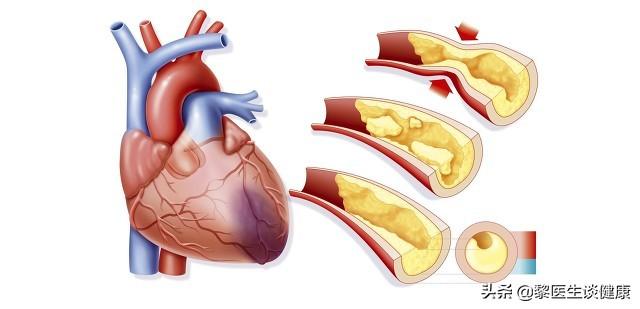
Myocardial infarction has a rapid onset, and the typical symptoms of myocardial infarction are squeezing pain in the precordial area, often accompanied by dyspnea, a sense of dying, sweating, chest tightness and other discomforts, while some myocardial infarction patients may have pain in the jaw, neck, back, epigastric area and other parts of the body, which is easily misdiagnosed, and some patients may have no obvious pain, especially in the elderly or some diabetics, which is easy to be overlooked, and then delayed the optimal treatment. The time of the best treatment is delayed.
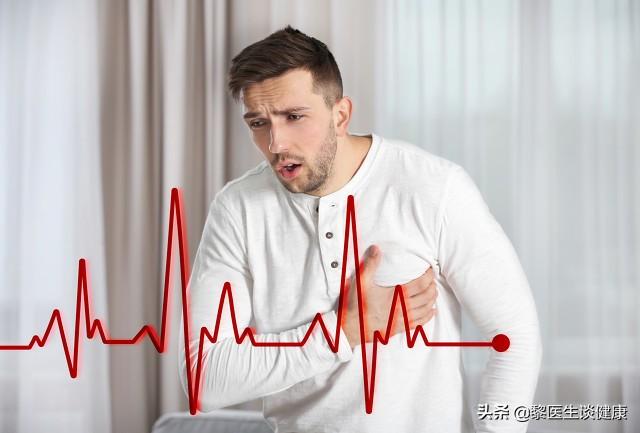
In the case of myocardial infarction, attention must be paid to timely recognition, under timely treatment can minimize the occurrence of complications, improve the quality of life and improve the prognosis. Before myocardial infarction occurs, some patients may experience frequent angina attacks, when the duration of chest pain and the frequency of attacks will gradually increase. Especially for people with hypertension, diabetes mellitus, coronary heart disease and other underlying diseases, when sudden persistent precordial pressure pain occurs under the triggers of strenuous exercise, overeating and drinking, emotional excitement, and straining to defecate, they should be highly alert to the possibility of myocardial infarction.
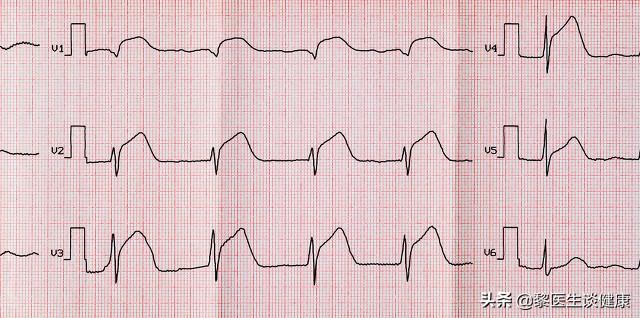
For patients who are highly suspected of myocardial infarction, they should be sent to the doctor in time for medical consultation and timely improvement of ECG, myocardial enzyme spectrum, coronary angiography and other tests, and once the diagnosis is clear, they should undergo revascularization therapy in time in order to rapidly open the blood vessels, restore the myocardial blood supply, and reduce the occurrence of necrosis of myocardial cells. We hope that everyone will pay attention to maintain a good lifestyle and a good mindset in daily life, and follow the guidance of professional doctors to carry out standardized treatment in order to improve the quality of life to the greatest extent possible.
I hope this article can help you, if you have any questions, welcome to leave a message at the end of the article and discuss together.
This article was originally written by Dr. Lai on Health (formerly GP Sweeper).
Follow @DrLeeTalksHealth for more health knowledge.
Myocardial infarction refers to acute myocardial ischemic necrosis, and in most patients with myocardial infarction, it occurs on the basis of coronary artery disease, where there is a dramatic reduction or interruption of coronary blood supply, resulting in severe and persistent ischemia of the corresponding myocardium. The usual cause is either rupture of an unstable plaque in the coronary arteries or secondary thrombosis on top of its vesiculation, resulting in sustained and complete interruption of coronary blood flow.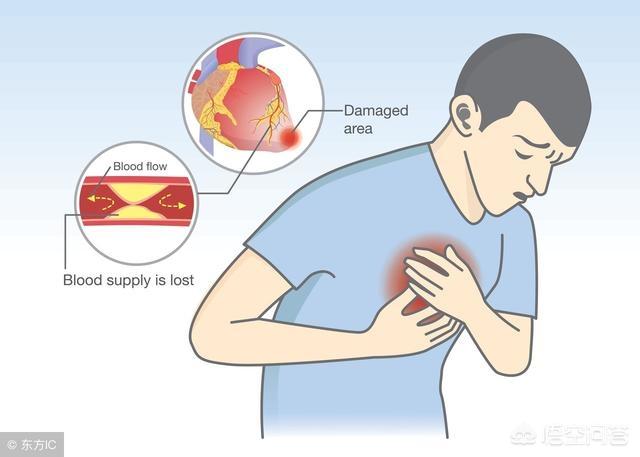
I. Early symptoms of heart attack
Depending on the location of the heart attack and the size of the area affecting the myocardium, the collateral circulation of the coronary arteries, etc., the patient will produce different clinical manifestations. The usual early symptoms of heart attack are:
1. Aura of heart attack: More than 50% of patients with heart attack have precursor symptoms such as fatigue, chest discomfort, palpitations, shortness of breath, irritability, and angina pectoris a few days before the onset of the attack. Among them, new-onset angina (first attack without previous angina) or aggravation of existing angina (malignant angina that is more severe than previous angina) are the prominent manifestations.
2. Pain: Pain is the first symptom that appears in myocardial infarction, and it mostly occurs in the early morning. The pain site is usually the same as that of angina pectoris and lasts for a long time, which cannot be relieved by taking nitroglycerin, and the patient will be sweating, fearful, chest tightness, irritable and have a sense of near death. Some people have pain in the upper abdomen, which can be mistaken for stomach pain; some patients' pain will radiate to the arms, upper back, neck, jaw, which can be mistaken for joint pain or toothache.
3. Gastrointestinal reactions: Myocardial ischemia is usually accompanied by frequent nausea, vomiting and epigastric distension. Some patients also experience intestinal flatulence and in severe cases, eructation. This is caused by tissue ischemia due to stimulation of necrotic myocardial cells and decreased cardiac output.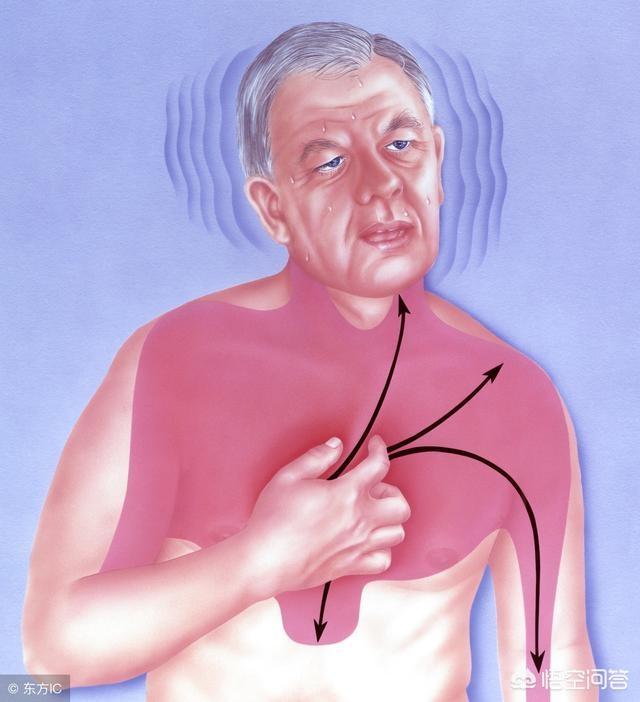
II. First aid in the event of a heart attack
The emphasis in myocardial infarction is on early detection and early hospitalization. To restore blood perfusion to the myocardium as soon as possible, interventional therapy should be performed within 90 minutes and thrombolysis within 12 hours. Patients with coronary heart disease should usually carry nitroglycerin tablets, suspected of myocardial infarction, or aura of infarction performance, first of all, in situ semi-recumbent rest, sublingual nitroglycerin. Every 5 minutes you can take a piece of sublingual nitroglycerin, even take three tablets still do not relieve the person, do not continue to take the drug, quickly to the surrounding people to call for help and call 120 emergency telephone.
For conscious patients with normal heartbeat and breathing, CPR is not required. When the patient does not call out, breathing is weak, and the pulse cannot be felt, then the patient can be resuscitated by cardiopulmonary resuscitation (CPR). The method is to stack the hands, in the middle of the patient's chest (the middle position of the line between the two nipples), press at a frequency of 100 times per minute, the depth of pressure to reach 5 centimeters can be.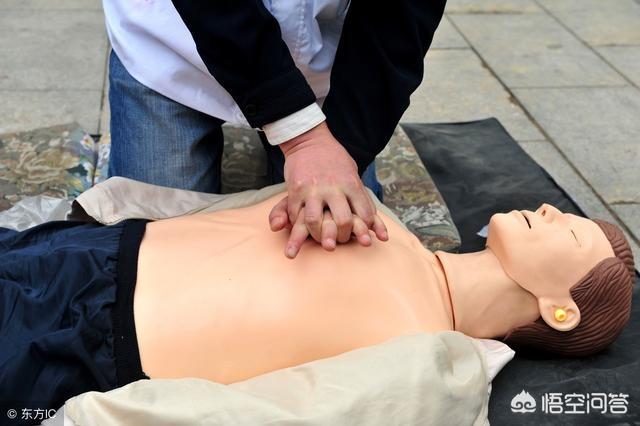
III. Early prevention of heart attack
In all diseases, prevention is more important than cure.1. Prevention of heart attacks in normal peopleDiet should be low in salt and fat, and eat more fruits and vegetables. Don't smoke, keep regular exercise, control your weight, and keep a balanced mind. above 40 years old, you should test your blood lipids once a year and do a physical examination.2. Prevention of heart attack in people who have already suffered from coronary heart disease, in addition to adhering to the lifestyle interventions described above, you need to take aspirin for antiplatelet; statins to regulate lipids and stabilize plaque; and beta-blockers, nitrates, ACEIs, or ARBs to control risk factors.
Huazi reminds that the medication should be taken under the supervision of a doctor. If you find any problems in the process of medication, please consult your doctor or pharmacist in time.I am Pharmacist Wazi, welcome to follow me and let me be the pharmacist by your side!
Early symptoms of myocardial infarction, in fact, once myocardial infarction occurs, generally refers to acute myocardial infarction, the early symptoms of the most important is the acute myocardial ischemia symptoms, often mainly chest pain, the pre-cardiac area of the palm of the scope of the pressure-like pain, the sense of suffocation, and even the emergence of the pain to the shoulder, back radiation, this performance is the most typical. Some people may experience abdominal pain, tightness in the shoulders, and toothache, which tends to last longer and unrelieved, even up to two hours. Once this symptom occurs, it is suspected that there may be myocardial infarction, especially if you usually have coronary heart disease, once this early manifestation occurs, you must go to the hospital as soon as possible for treatment.
(I'm Luo Min, chief physician of a Grade 3A hospital, with more than 30 years of clinical experience in the first line of work of the "old" doctors, my efforts only to harvest everyone's approval, if my answer can help you, I hope you can like, attention, if you have any questions, you can comment or private message me, I will try to help everyone!)

Early symptoms of heart attack are felt days before the onset of the attack, with weakness, always feeling uncomfortable in the chest, always feeling irritable, palpitations, shortness of breath when moving around, and prodromal symptoms such as angina pectoris. Angina pectoris is characterized prominently by new onset or appearance of more intense and frequent pain than before, the pain is longer than before, and the trigger is not obvious. If nitroglycerin is taken, it does not feel effective enough to provide relief. Angina attack is accompanied by sweating, and there may be nausea, vomiting, bradycardia, as well as acute cardiac insufficiency, severe arrhythmia, and large fluctuations in blood pressure, which are all early symptoms of heart attack.
(1) Chest pain is the earliest symptom, the pain site and nature is the same as angina pectoris, but the degree is heavier, the duration is longer, up to a few hours or a few days, rest and containing nitroglycerin tablets can not be relieved.
(2) Fever, tachycardia, leukocytosis and increased sedimentation rate are caused by absorption of necrotic material.
(3) The severe pain is often accompanied by frequent nausea, vomiting, and epigastric distension, and is associated with vagal nerve stimulation by necrotic tissue, as well as decreased cardiac output and inadequate tissue perfusion.
(4) 75% to 95% of patients. They occur within 1 to 2 weeks of disease onset, with a high prevalence within 24 hours. The most frequent ventricular arrhythmias are often a precursor to ventricular fibrillation if the ventricular tachycardia is frequent, occurs in pairs, or is short bursts of ventricular tachycardia, multisource, or falls in the vulnerable phase of the previous beat.
(5) Shock occurs when the systolic blood pressure is less than 80 mmHg and the urine output is less than 20 m| per hour. It mostly occurs within a few hours to a week after the onset of the disease. Shock occurs in about 20% of patients. Shock is often due to hypovolemia, but also due to extensive myocardial necrosis, cardiac output decreased dramatically.
(6) Predominantly acute left heart failure, which may occur within the first few days of illness or during the improvement phase of pain or shock, is the result of a significant weakening or incoordination of cardiac contractility after infarction, with an incidence of 32-48%.
Symptoms of early heart attack are mainly severe chest tightness and chest pain in the anterior region of the heart, and the patient has a sense of near death accompanied by profuse sweating. In fact, once myocardial infarction occurs, most patients will have these typical symptoms, and the symptoms are obvious once the disease occurs.
It is precisely because of these typical symptoms that the patient's attention can be drawn to timely medical treatment. At the same time, doctors can also analyze and judge according to these typical symptoms, so as to carry out relevant examinations in time and make a clear diagnosis.
Once a patient with coronary artery disease suddenly develops the above symptoms, it is necessary to do electrocardiograms and cardiac enzyme profiles in a timely manner to check them at an early stage. There is no change also need to be reviewed at regular intervals, and the dynamic changes of the patient can be seen through multiple reviews.
This question and answer are from the site users, does not represent the position of the site, such as infringement, please contact the administrator to delete.